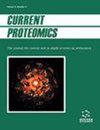Current understanding of dried spots platform for blood proteomics
IF 0.5
4区 生物学
Q4 BIOCHEMICAL RESEARCH METHODS
引用次数: 0
Abstract
Dry blood spots (DBS) have been used in combination with liquid chromatography-mass spectrometry for targeted proteomics to identify sensitive and specific novel biomarkers. DBS presents several advantages over other traditional blood sampling methods. This re-view discusses the past, present and future of the technology, focusing on studies with clin-ical and population relevance. Arguments for and against DBS are presented by discussing technological advances, particularly those related to mass spectrometry (MS) and multiple reaction monitoring (MRM), sample preparation issues, disease biomarkers, pharmacoki-netics, and pharmacodynamics. There will be a focus on proteomic studies that rely on DBS as a sampling method. In this context, numerous studies on the diagnosis and treatment of several diseases. To date, proteomic reports of studies using DBS have shown that DBS can facilitate diagnosis and prognosis. DBS offers several advantages that make it a viable op-tion for many fields. Moreover, some of its disadvantages can be easily overcome through automation to increase reproducibility and reduce protocol variability and standardization of parameters such as the volume of sample used. Within this context, here we propose to review the advantages and disadvantages of using DBS for blood proteomics and provide an understanding of how current DBS-based protocols are being conducted for future stand-ardization and protocol optimization.干斑血蛋白质组学平台的最新研究进展
干血斑(DBS)与液相色谱-质谱联用用于靶向蛋白质组学,以鉴定敏感和特异性的新型生物标志物。与其他传统的血液采样方法相比,DBS具有几个优点。这篇综述讨论了该技术的过去、现在和未来,重点是与临床和人口相关的研究。支持和反对DBS的论据是通过讨论技术进步,特别是与质谱(MS)和多反应监测(MRM)、样品制备问题、疾病生物标志物、药代动力学和药效学相关的技术进步。将重点放在依赖DBS作为采样方法的蛋白质组学研究上。在此背景下,对几种疾病的诊断和治疗进行了大量的研究。迄今为止,使用DBS的蛋白质组学研究报告表明,DBS可以促进诊断和预后。DBS提供了几个优势,使其成为许多领域的可行选择。此外,它的一些缺点可以很容易地通过自动化来克服,以增加再现性,减少方案的可变性和参数的标准化,如使用的样本量。在此背景下,我们建议回顾使用DBS进行血液蛋白质组学的优点和缺点,并提供当前基于DBS的方案如何进行未来标准化和方案优化的理解。
本文章由计算机程序翻译,如有差异,请以英文原文为准。
求助全文
约1分钟内获得全文
求助全文
来源期刊

Current Proteomics
BIOCHEMICAL RESEARCH METHODS-BIOCHEMISTRY & MOLECULAR BIOLOGY
CiteScore
1.60
自引率
0.00%
发文量
25
审稿时长
>0 weeks
期刊介绍:
Research in the emerging field of proteomics is growing at an extremely rapid rate. The principal aim of Current Proteomics is to publish well-timed in-depth/mini review articles in this fast-expanding area on topics relevant and significant to the development of proteomics. Current Proteomics is an essential journal for everyone involved in proteomics and related fields in both academia and industry.
Current Proteomics publishes in-depth/mini review articles in all aspects of the fast-expanding field of proteomics. All areas of proteomics are covered together with the methodology, software, databases, technological advances and applications of proteomics, including functional proteomics. Diverse technologies covered include but are not limited to:
Protein separation and characterization techniques
2-D gel electrophoresis and image analysis
Techniques for protein expression profiling including mass spectrometry-based methods and algorithms for correlative database searching
Determination of co-translational and post- translational modification of proteins
Protein/peptide microarrays
Biomolecular interaction analysis
Analysis of protein complexes
Yeast two-hybrid projects
Protein-protein interaction (protein interactome) pathways and cell signaling networks
Systems biology
Proteome informatics (bioinformatics)
Knowledge integration and management tools
High-throughput protein structural studies (using mass spectrometry, nuclear magnetic resonance and X-ray crystallography)
High-throughput computational methods for protein 3-D structure as well as function determination
Robotics, nanotechnology, and microfluidics.
 求助内容:
求助内容: 应助结果提醒方式:
应助结果提醒方式:


